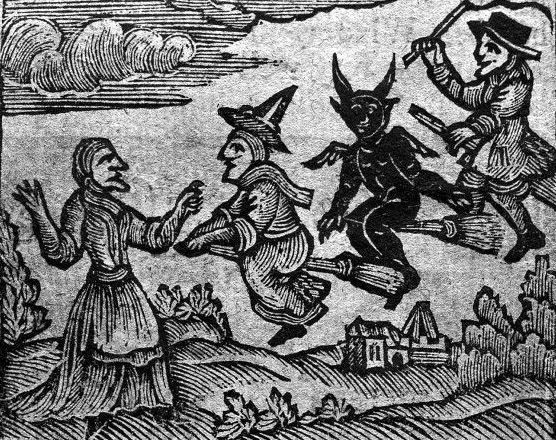As a senior Renaissance major with a frankly disturbing obsession with witchcraft and the occult, I considered nothing but the magical and the mystical for my capstone project. Witch- craft, however, is a tricky con- cept to nail down.
The misconceptions and stereotypes oftentimes get in the way of sources that took witchcraft seriously, and the primary sources that do take the magic seriously tend to have their own list of falsities. Researching the subject feels like running in circles more often than not, but when one looks from the right lens things start to fall into place.
For example, knowing what the stereotypes given to witches by those who were legitimately afraid that they’d be cursed helps us to understand the cultural implications of why the people accused of witchcraft were easy targets. Witches were usually women—though there were a handful of men that were tried and convicted—and most were women who secluded themselves from others, or had an unpleasant demeanor. Age also played a factor. Old women were more likely to be tried for witchcraft than young women, although both old and young women had their own subset of stereotypes they followed. Old witches aimed to fulfill a vendetta; young witches took control of their sexuality. Both had deadly implications.
The world of witchcraft was not left without its celebrities, though. A few witches came to be household names in the towns they resided. Agnes Waterhouse, also known as Mother Waterhouse, was among the first women to be tried and convicted of witchcraft in the year 1566. Her crime involved dealings with a familiar, a cat called Satan, that did her bidding in exchange for her blood. Familiar were seen as vectors to the Devil, as the witch in question would need to make a pact to sell her soul to Satan—the ruler of Hell as well as the cat—and seal the deal with her blood, as mentioned. One of the tests conducted to determine her guilt consisted of searching her body for spots where the cat had bitten. They found them on the top of her head. She was found guilty and hung.
Her story is familiar to modern readers. It includes all the typical stereotypes of witches—a black cat, Devil worship, and I’m sure she owned a broom—but there are tales that are not as recognizable to us, despite the similarities. John Lowes, a clergyman, was tried and convicted of witchcraft in 1645. He, too, was inspected for marks, which were found on the crown of his head and beneath his tongue. His cat was not a cat, but an imp. Several of them. And they, like Satan the cat, fed on his blood and devoted themselves to conducting whatever task Lowes asked of them. Why, then, do we recognize the tropes of witchcraft when a woman is assigned them, but not when a man fills the same bill? The answer is both simple and complicated. On one hand, it is clear that women often get blamed when things go wrong, especially during the Renaissance. And if the woman in question is cranky and old, then the blame falls easily onto her lap. But on the other hand, clergymen were often seen as feminized men due to the nature of their job description. This, of course, points to the fact that women are blamed for most things, but also reveals that men had their own set of expectations to abide by, and if one did not, they were subject to the same mistreatment women were given. Seems like hocus pocus to me.





